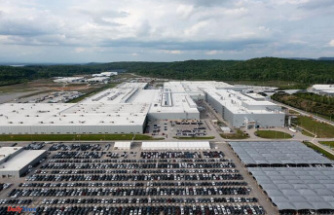According to a media report, researchers in the USA have made a breakthrough in research into nuclear fusion as the energy source of the future. Accordingly, for the first time it is possible to release more energy than is required for the operation of the experiment. Can power plants be operated so soon?
It could be a milestone in energy production: The US Department of Energy wants to announce a breakthrough in nuclear fusion research on Tuesday. According to the Financial Times, researchers have succeeded for the first time in generating a controlled fusion reaction that yields a net energy gain. That means more energy was gained from the reaction than was put into it. This is the crucial requirement for a usable energy source.
Should it be possible to use CO2-free nuclear fusion to generate energy, this would be an opportunity to replace fossil and climate-damaging energy sources such as oil, coal and gas. And in contrast to nuclear fission, which has been used for decades to generate energy in nuclear power plants, there is no long-lived radioactive waste. In addition, very little fuel is required - one gram of hydrogen can provide as much energy as eleven tons of coal.
Researchers have been trying to use nuclear fusion as an energy source since the 1950s. However, despite intensive efforts, this has not yet been achieved. "For most of us, this was only a matter of time," said a senior fusion scientist familiar with work at the National Ignition Facility (NIF) at Lawrence Livermore National Laboratory in California, where the discovery was made that " Washington Post".
At the Lawrence Livermore National Laboratory in California, researchers are working with so-called inertial fusion. A capsule filled with hydrogen is fired at with the largest laser in the world. According to the Financial Times, in the past two weeks it has been possible to generate more energy than is required for the operation of the plant: The fusion reaction in the plant has generated about 2.5 megajoules of energy, which is about 120 percent which corresponds to 2.1 megajoules of energy in the lasers, people familiar with the results said.
US Secretary of Energy Jennifer Granholm wanted to comment on a "major scientific breakthrough" on Tuesday, it said. The laboratory in California confirmed that a successful experiment had recently occurred. "However, the exact yield is still being determined and we cannot confirm that it is above the threshold at this time," it said. The results would still be evaluated.
"These are great results, for which we would like to congratulate our colleagues at NIF," said Prof. Dr. Sibylle Günter, Scientific Director of the Max Planck Institute for Plasma Physics (IPP), in a first reaction to a request from ntv.de. "For the first time, more energy was released by fusion reactions than the laser irradiated." However, the efficiency of the lasers in converting electrical energy into laser energy was not taken into account when calculating the energy gain.
Does this mean that the dream of a fusion power plant is within reach? The laser fusion tested in California is initially about the "ignition" of a pellet, explains Prof. Günter. However, it is difficult to do this by direct laser fire. "That's why NIF uses a so-called cavity in which the lasers first shoot at a wall and generate X-rays there that are very homogeneous." Homogeneous irradiation of the pellets is extremely important, otherwise instabilities occur that do not allow the high densities and temperatures required to use fusion energy to be achieved.
However, the technology used in California is probably too inefficient for a power plant because the fuel has to be irradiated directly. "In addition, you would have to ignite such a pellet in a power plant at least ten times per second. These and many other technological questions still have to be clarified before one can think about building a power plant."












